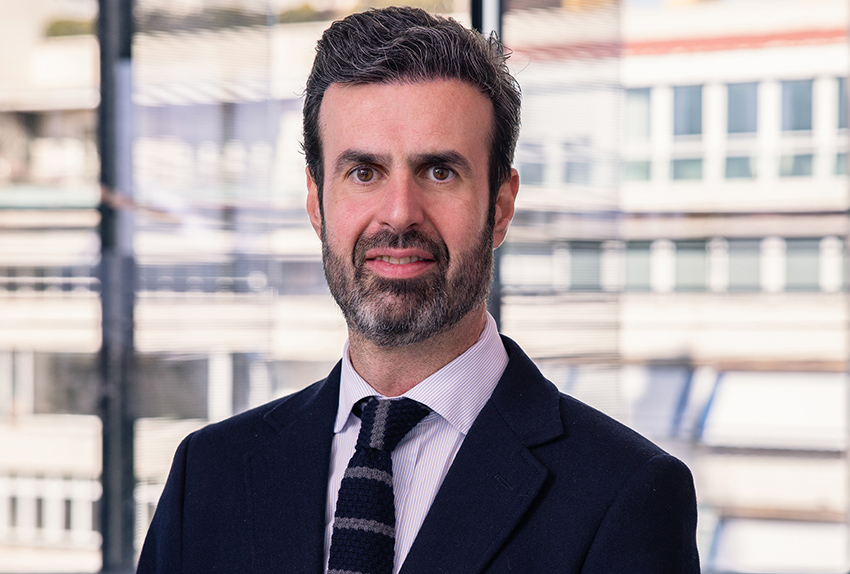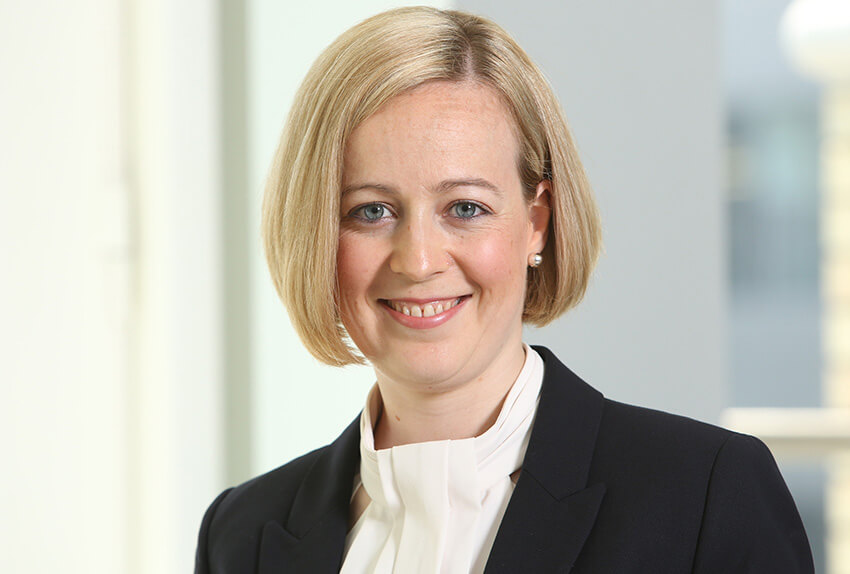Partner Madrid
"RD-L 6/2022 contains a package of measures within the framework of the Spanish national plan in response to the economic and social consequences of the war in Ukraine."
RD-L 6/2022 contains a package of measures within the framework of the Spanish national plan in response to the economic and social consequences of the war in Ukraine.
It includes a number of measures relevant for renewable energy projects and demonstrates the commitment of the Spanish government to grow the renewable energy sector in Spain.
Key measures relevant for renewable energy projects include:
- updates to the Specific Remuneration Regime for subsidised renewable energy projects in Spain;
- a simplification of the environmental approval procedure for certain wind farms and solar photovoltaic projects;
- suspension of the procedure for granting access and connection to the transmission grid on the basis of temporal priority;
- extension and amendment of the clawback mechanism on windfall profits (which applies to all energy producers in Spain, for background please see our earlier article on this mechanism: TEMPORARY WINDFALL PROFIT REDUCTION MECHANISM ON REMUNERATION FROM ELECTRICITY PRODUCTION ACTIVITY IN SPAIN);
- the release of 10% of the reserved capacity in transmission grid knots for self-consumption facilities;
- measures to increase distribution capacity;
- regulations for renewable gas pipelines, which will support renewable hydrogen projects;
- a regulatory framework for floating solar photovoltaic projects and stand-alone battery storage projects; and
- an obligation on all electricity sector undertakings to finance the electricity social voucher (“bono social”) and the cost of electricity supply for consumers at risk of social exclusion.
Each of these aspects of RD-L 6/2022 is addressed in further detail below.
This article only analyses certain aspects and provisions of RD-L 6/2022 which we consider particularly relevant for renewable energy projects. It is not a comprehensive analysis of RD-L 6/2022, which also covers measures in other areas and sectors not considered in this article.
1. Updates to the Specific Remuneration Regime
RD-L 6/2022 includes an exceptional update to the Specific Remuneration Regime (“SRR”) which applies to subsidised renewable energy facilities in Spain.
"It includes a number of measures relevant for renewable energy projects and demonstrates the commitment of the Spanish government to grow the renewable energy sector in Spain."
This update will be implemented through a further Ministerial Order within two months from the entry into force of RD-L 6/2022. At this stage, we have summarised below the key updates to the SRR but note that we also await the further Ministerial Order in this regard.
This update will be carried out using the existing update system under Royal Decree 413/2014 of 6 June, (“RD 413/2014”) and with the following features:
- The regulatory semi-period from 1 January 2020 to 31 December 2022 is divided into two periods: the first, between 1 January 2020 and 31 December 2021 (i.e. a period of two years) and the second, between 1 January 2022 and 31 December 2022 (i.e. a period of one year);
- The current values for economic parameters and calculation hypotheses will be used but with the following exceptions:
- the estimate of the market price for years 2022, 2023 and 2024 will be calculated as the arithmetic average of the market price of the annual futures contracts traded on the electricity futures market organised by OMIP during the last six months of 2021. For 2025 onwards, it will be considered the same value as for the year 2024;
- to estimate the market revenues for 2022 onwards, the actual technological peak coefficient (“coeficiente de apuntamiento”) will be considered for each technology;
- the estimation of the price of fossil fuels for the two semesters of 2022 will be carried out considering the half-yearly variations of the cost of raw materials and, where appropriate, of the access tolls provided for in Order IET/1345/2015;
- the estimate of the price of the CO2 emission allowance for 2022 onwards shall be calculated as the arithmetic average of the daily quotations of the CO2 emission allowance futures contracts for 2022 traded during the last six months of 2021; and
- to calculate the adjustment value for deviations in the market price for 2020 and 2021, the value of the average annual price of the daily and intraday market will be €33.94/MWh for the year 2020 and €111.90/MWh for the year 2021¹.
- These remuneration parameters will be applicable from 1 January 2022. The National Commission of Markets and Competition (“CNMC”) will settle the amounts from the first settlement in which the values are available. The CNMC will make the adjustment corresponding to the difference between the updated remuneration parameters and the amounts already settled as SRR in the following settlements, including the collection rights or payment obligations generated, which shall be imputed to the financial year 2022.
- For the update of the regulatory semi-period from 1 January 2023 to 31 December 2025, the value of the average annual price of the daily and intraday market, to calculate the adjustment value for deviations in the market price for 2022, will be calculated as the mathematical average of the hourly prices of the daily and intraday market from 1 January 2022 to 31 December 2022. The value obtained will be published before 15 January 2023.
The impact of these updates on renewable energy projects under the SRR will need to be further considered once the Ministerial Order implementing these updates is published, which is expected by 31 May 2022. We also note that the reasonable rate of return for the current regulatory period set at 7.09% (or 7.398%) has not been changed under RD-L 6/2022.
Key contacts
"The adjustment mechanism for deviations in the market price for 2023 onwards has been eliminated."
In addition, the adjustment mechanism for deviations in the market price for 2023 onwards has been eliminated. This means that there is no longer a regulatory cap and floor in the SRR from 1 January 2023. This measure is designed to incentivise renewable energy facilities to trade energy production through forward markets (to reduce exposure to the volatility of the daily markets).
2. Simplification of the environmental approval procedure for certain wind farms and solar photovoltaic projects
A new simplified procedure for assessing environmental impact has been approved for certain renewable energy projects:
- Scope of application: the projects must be either: (A) mainland wind farms except those for self-consumption not exceeding 100 kW; or (B) solar photovoltaic facilities that sell energy to the grid, are not located on roofs or urban land and that occupy more than 10 ha of surface area. In addition, the projects must meet the following requirements:
- Connection: Projects must not have overhead transmission lines with voltage equal to or greater than 220 kV and a length greater than 15km (unless they run entirely underground through urbanised land – “suelo urbanizado”);
- Size: Wind projects must have a capacity equal to or less than 75 MW and solar photovoltaic projects must have a capacity equal to or less than 150 MW;
- Location: Projects must not be located in a marine environment or in areas of the Natura 2000 Network (which is a network of core breeding and resting sites for rare and threatened species). In addition, projects must be located in areas of low and/or moderate sensitivity according to the Spanish “Environmental zoning for the implementation of renewable energies“;
- Timeframe: This simplified procedure may be applicable to applications submitted before 31 December 2024;
- Application process: For the assessment of environmental impact, an application will be required, including an executive summary quantifying the environmental impact in accordance with RD-L 6/2022;
- Report and timing: The environmental body will formulate a report determining the environmental impact for the relevant project (“informe de determinación de afección ambiental”) within a maximum period of two months upon receiving the application and necessary documentation;
- Resolution: Projects under this simplified procedure will not be subject to the more detailed environmental assessment currently required under Law 21/2013, to the extent set-out in the report referred to above. The report may contain conditions to mitigate or compensate for environmental impacts, as well as conditions for monitoring and surveillance. In general, the relevant project would need to be authorised within two years of the report, or where applicable, within the deadlines under Royal Decree-Law 23/2020; and
- Applicability of the procedure: This procedure is not basic regulation and will therefore only be applicable to procedures processed by the General State Administration and its public bodies. The Autonomous Communities may apply it within the scope of their competences if they so determine (and only for the aforementioned projects).
"We anticipate that this procedure could reduce the timeframe for approval of renewable energy projects to 10-12 months, compared with the current longer timing for approval."
We anticipate that this procedure could reduce the timeframe for approval of renewable energy projects to 10-12 months, compared with the current longer timing for approval.
3. Suspension of the procedure for granting access and connection to the transmission grid on the basis of temporal priority
The procedure for granting access and connection to the grid on the basis of temporal priority (i.e. in time order of application) will be suspended for a two month period commencing on 19 April 2022. This suspension will include the issuance of acceptability reports in relation to knots in the distribution grid.
During this suspension, the grid operator (Red Eléctrica de España, by its Spanish acronym “REE”) should (i) assess the capacity of the grid system, as well as (ii) send to the Secretary of State for Energy a report on the knots that meet the criteria to be reserved for access capacity tenders.
Even though this provision does not explicitly suspend the submission of applications for access and connection (only their processing), it appears from REE’s website that it is currently not allowing submission of applications for access and connection to the grid on the basis of this provision of RD-L 6/2022.
4. Extension and amendment of the clawback mechanism on windfall profits
"The procedure for granting access and connection to the grid on the basis of temporal priority (i.e. in time order of application) will be suspended for a two month period commencing on 19 April 2022."
Article 4 of Royal Decree-Law 17/2021, of 14 September, which is the mechanism introduced by the Spanish government in 2021 to claw-back excess remuneration received by energy production facilities due to the incorporation of high natural gas prices into wholesale electricity prices i.e. windfall profits, has been extended for three months until 30 June 2022.
In addition, certain modifications have been made to the clawback mechanism itself. In particular, the exemption to the mechanism for energy contracted or hedged at a fixed price, i.e. hedged under a PPA, whether physical or financial, is amended so that:
- Energy covered by a forward contracting instrument entered into before 31 March 2022 will be exempt from the mechanism (provided that the hedging price associated with such instrument(s) is fixed and for a term equal to or greater than one year); and
- In respect of energy covered by a forward contracting instrument entered into on or after 31 March 2022, only forward contracted energy with a fixed price that is equal to or less than €67/MWh will be exempt. If the forward contracted price is higher than €67/MWh, the clawback mechanism/reduction will operate in respect of the difference between €67/MWh and the higher contracted price with a correcting factor currently set at 0.9.
A new provision has also been introduced in relation to forward contracts or hedges that may be constituted intragroup between generation and marketing companies belonging to vertically integrated groups. In these cases, for the application of the clawback mechanism, the final price charged to the consumer by the group´s supply company will be taken into account and the fixed hedging price exempt from reduction will be €67/MWh but increased by an average marketing margin for the sector, by activity segment or tariff segment, for the last five years and adjusted for corresponding losses.
5. Release of 10% of capacity in transmission grid knots for self-consumption facilities
"The mechanism introduced by the Spanish government in 2021 to claw-back excess remuneration received by energy production facilities due to the incorporation of high natural gas prices into wholesale electricity prices i.e. windfall profits, has been extended for three months until 30 June 2022."
Ten percent of the total available capacity in each of the transmission grid knots reserved for the holding of access capacity tenders has been released for self-consumption facilities. This may correspond to an additional 7 GW of capacity to be available for self-consumption facilities.
Self-consumption facilities are renewable energy facilities that fall within the self-consumption schemes under Spanish regulation and which sell their surplus energy into the grid (e.g. a private wire renewable energy plant which primarily directly powers a factory or manufacturer but also has a grid connection in order to sell any surplus energy generated and not used by the factory or manufacturer into the electricity market).
This released capacity may be granted to new renewable electricity generation facilities provided that (i) they are associated with a form of self-consumption; and (ii) the quotient between the contracted power in the P1 period (i.e. peak period) and the installed generation power is at least 0.5.
If within two years after entry into force of RD-L 6/2022 this released capacity has not been granted to the aforementioned facilities, it may be granted in application of the general criterion of temporal priority in accordance with the procedure established in RD 1183/2020 (i.e. returned to the general capacity pool).
6. Measures to increase distribution capacity
In addition, on an exceptional basis for the three-year period from 2023 to 2025, distributors are required to include in their annual investment plans actions aimed at increasing the capacity for access to their distribution grid for new renewable generation, as well as for self-consumption, especially for those areas in which a recurring lack of capacity has become apparent.
These actions are to represent a minimum of 10% of the volume of investment entitled to remuneration chargeable to the system. In this regard, the deadline for submitting investment plans for 2022 has been extended up to 30 June 2022.
"In our opinion, this measure is significant because it may result in opportunities in distribution grid knots located in areas with good electrical meshing at the distribution level but a poor one at the transmission grid level."
In our opinion, this measure is significant because it may result in opportunities in distribution grid knots located in areas with good electrical meshing at the distribution level but a poor one at the transmission grid level.
7. Regulations for renewable gas pipelines, to support renewable hydrogen projects
RD-L 6/2022 has implemented an amendment to Law 34/1998 of 7 October 1998 on the hydrocarbons sector. In particular:
- Modification of Article 78 “Direct lines“: The wording of this article is modified in order to: (i) include as direct lines the connections of a renewable gas production plant with the gas system in which gas will be injected; (ii) extend to renewable gas producers the possibility of constructing direct lines; and (iii) establish the Autonomous Regions as the competent body for their processing and authorisation (unless said lines run through more than one Autonomous Region);
- Supply of renewable gases: An additional provision is introduced regarding the supply of renewable gases by means of isolated pipelines. By means of this provision:
the supply of renewable gases by means of isolated pipelines is recognised as being of public utility for the purposes of compulsory expropriation and the exercise of the right of way;
these pipelines are excluded from hydrocarbon planning;
the Autonomous Regions through which the pipelines run are established as the competent body for their processing and authorisation, except when they cross more than one Autonomous Region, which will be the responsibility of the relevant Ministry;
a prior mandatory report from the CNMC is required for authorisation where the maximum design pressure exceeds 16 bar; and
a binding report from REE is required in respect of hydrogen pipelines connected to electrolysers fed by the electricity grid.
"These measures will support and facilitate renewable hydrogen projects where transportation infrastructure was a previous barrier for the development of the project."
These measures will support and facilitate renewable hydrogen projects where transportation infrastructure was a previous barrier for the development of the project.
8. Regulatory framework for floating solar photovoltaic projects and battery storage projects
RD-L 6/2022 also passed amendments to better define and regulate floating solar photovoltaic plants and their occupation of the hydraulic public domain.
Floating solar photovoltaic plants will now be eligible for a temporary concession for 25 years and are contemplated on canals, dams and other hydraulic works owned by the state or other public entities.
In addition, the existing authorisation regime for generation facilities has been extended to standalone battery storage facilities that are “directly or indirectly connected to the transmission and distribution grids alone or in hybrid form“.
This is an important step for the development of battery projects in Spain and clarifies that there is an authorisation process available for standalone battery storage projects and that developers of standalone storage projects can apply for grid and sub-station access on the same basis as energy production facilities.
9. Obligation on all electricity sector undertakings to finance the electricity social voucher (“bono social”) and the cost of electricity supply for consumers at risk of social exclusion
As a result of Spanish Supreme Court judgements declaring that the previous system for financing the electricity social voucher (i.e. discount) in Spain (“bono social”) is incompatible with Directive 2009/72/EC and therefore no longer applies, a new financing scheme for the electricity social discount and the cost of electricity supply for consumers at risk of social exclusion has been proposed.
The electricity social discount and both the cost of non-payment and the co-financing of certain at risk consumers have been declared a public service obligation.
The financing of these public service obligations will be assumed by all undertakings that participate in activities aimed at the supply of electricity, including the production, transmission, distribution and commercialisation of electricity, as well as by direct consumers in the market. The amount of funding required will take into account the aggregated turnover of each activity in the electricity supply chain.






